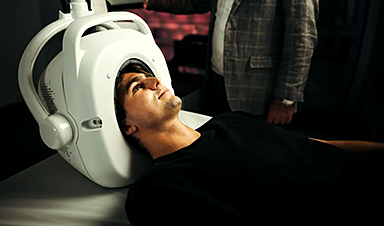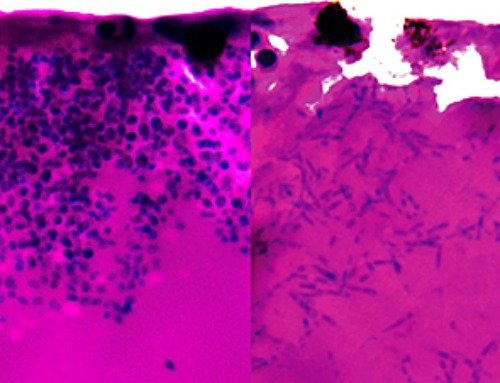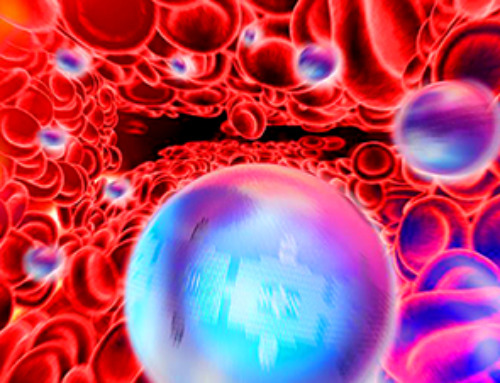A computer-assisted needle misses its target, puncturing the spine. A diabetic patient goes rapidly downhill after a computer recommends an incorrect insulin dosage. An ultrasound fails to diagnose an obvious heart condition that is ultimately fatal.
These are just a few examples of incidents reported to the United States’ Food and Drug Administration involving health technology assisted by artificial intelligence (AI), and Australian researchers say they are an “early warning sign” of what could happen if regulators, hospitals and patients don’t take safety seriously in the rapidly evolving field.
“This is essentially showing us that when we’re putting in AI systems, we just need to be taking the safety of these systems really seriously,” Professor Farah Magrabi said.
Her team at the Australian Institute of Health Innovation at Macquarie University this month published a review of 266 safety events involving AI-assisted technology reported to the US watchdog. The article appeared in the Journal of the American Medical Informatics Association.
Only 16 per cent actually led to patients being harmed, but two-thirds were found to have the potential to cause harm, and 4 per cent were categorised as “near-miss events” in which users intervened.
Co-author Dr David Lyell said issues arose most commonly when users failed to enter the correct data, leading to an incorrect result, or misunderstood what the AI was actually telling them when it produced a result.
For example, one patient suffering a heart attack delayed medical care because an over-the-counter electrocardiogram device – which is not capable of detecting a heart attack – told them they had “normal sinus rhythm”.
“AI isn’t the answer; it’s part of a system that needs to support the provision of healthcare. And we do need to make sure that we have the systems in place that supports its effective use to promote healthcare for people,” Lyell said.
The researchers chose to analyse cases in the US, where the implementation of AI-enabled health devices is more advanced than in Australia. The US regulator has, to date, approved 521 artificial intelligence and machine learning-enabled medical devices, with 178 of those added in 2022.
In Australia, the Therapeutic Goods Administration (TGA) does not collect data about the number of approved devices in Australia that have AI or machine-learning components, but Magrabi said the regulator was taking the issue “very, very seriously”.
“AI isn’t the answer, it’s part of a system that needs to support the provision of health care.”
David Lyell, Australian Institute of Health Innovation, Macquarie University
AI has been used in healthcare devices for decades, but an explosion in data collection, computing power and advanced algorithms has opened up new frontiers, said David Hansen, chief executive of the CSIRO’s Australian E-Health Research Centre.
Sydney-based medical device start-up EMVision is one Australian company taking advantage of these advancements to develop a portable device for diagnosing stroke without the need for an MRI.
In the development stage, the company is using an advanced algorithm and high-powered computers to simulate stroke in numerous places in the brain, building up a database of synthetic images similar to MRIs which are then compared with real-life MRI and CT results from hospital clinical trials at Royal Melbourne, Liverpool and Princess Alexandra hospitals.
“We wouldn’t be able to do what we’re doing today if we didn’t have the [high-powered computer] infrastructure for the simulation,” said head of product development Forough Khandan.
Co-founder Scott Kirkland said the intention was not to completely replace CT and MRI scans, but to diagnose stroke in the first hour when treatment is most effective. The bedside device, set to be launched in 2025, will use a “traffic light” system based on a probability algorithm to help determine what type of stroke might have occurred.
“It’s better for an algorithm to give an ‘I don’t know’ than an incorrect answer, and have the wrong treatment and or triage process followed,” Kirkland said.
Radiology is at the forefront of the rapid adoption of AI in healthcare, especially in breast cancer screening and analysis of chest X-rays.
“A couple of years ago, almost no radiologist would say they use it, now a fair percentage would say that they use it in their daily work,” said clinical radiologist and AI safety researcher Dr Lauren Oakden Rayner.
Rayner, a member of the college, said the technology had many potential benefits, but Australian regulators and clinicians needed to better understand the risks of fully autonomous systems before putting them into hospitals, clinics and homes.
“Humans are legally and morally responsible for decision-making, and it’s taking some of that out of human hands,” she said. “There’s no reason autonomous AI systems can’t exist … but they obviously have to be tested very, very tightly.”
News
AI Helped Scientists Stop a Virus With One Tiny Change
Using AI, researchers identified one tiny molecular interaction that viruses need to infect cells. Disrupting it stopped the virus before infection could begin. Washington State University scientists have uncovered a method to interfere with a key [...]
Deadly Hospital Fungus May Finally Have a Weakness
A deadly, drug-resistant hospital fungus may finally have a weakness—and scientists think they’ve found it. Researchers have identified a genetic process that could open the door to new treatments for a dangerous fungal infection [...]
Fever-Proof Bird Flu Variant Could Fuel the Next Pandemic
Bird flu viruses present a significant risk to humans because they can continue replicating at temperatures higher than a typical fever. Fever is one of the body’s main tools for slowing or stopping viral [...]
What could the future of nanoscience look like?
Society has a lot to thank for nanoscience. From improved health monitoring to reducing the size of electronics, scientists’ ability to delve deeper and better understand chemistry at the nanoscale has opened up numerous [...]
Scientists Melt Cancer’s Hidden “Power Hubs” and Stop Tumor Growth
Researchers discovered that in a rare kidney cancer, RNA builds droplet-like hubs that act as growth control centers inside tumor cells. By engineering a molecular switch to dissolve these hubs, they were able to halt cancer [...]
Platelet-inspired nanoparticles could improve treatment of inflammatory diseases
Scientists have developed platelet-inspired nanoparticles that deliver anti-inflammatory drugs directly to brain-computer interface implants, doubling their effectiveness. Scientists have found a way to improve the performance of brain-computer interface (BCI) electrodes by delivering anti-inflammatory drugs directly [...]
After 150 years, a new chapter in cancer therapy is finally beginning
For decades, researchers have been looking for ways to destroy cancer cells in a targeted manner without further weakening the body. But for many patients whose immune system is severely impaired by chemotherapy or radiation, [...]
Older chemical libraries show promise for fighting resistant strains of COVID-19 virus
SARS‑CoV‑2, the virus that causes COVID-19, continues to mutate, with some newer strains becoming less responsive to current antiviral treatments like Paxlovid. Now, University of California San Diego scientists and an international team of [...]
Lower doses of immunotherapy for skin cancer give better results, study suggests
According to a new study, lower doses of approved immunotherapy for malignant melanoma can give better results against tumors, while reducing side effects. This is reported by researchers at Karolinska Institutet in the Journal of the National [...]
Researchers highlight five pathways through which microplastics can harm the brain
Microplastics could be fueling neurodegenerative diseases like Alzheimer's and Parkinson's, with a new study highlighting five ways microplastics can trigger inflammation and damage in the brain. More than 57 million people live with dementia, [...]
Tiny Metal Nanodots Obliterate Cancer Cells While Largely Sparing Healthy Tissue
Scientists have developed tiny metal-oxide particles that push cancer cells past their stress limits while sparing healthy tissue. An international team led by RMIT University has developed tiny particles called nanodots, crafted from a metallic compound, [...]
Gold Nanoclusters Could Supercharge Quantum Computers
Researchers found that gold “super atoms” can behave like the atoms in top-tier quantum systems—only far easier to scale. These tiny clusters can be customized at the molecular level, offering a powerful, tunable foundation [...]
A single shot of HPV vaccine may be enough to fight cervical cancer, study finds
WASHINGTON -- A single HPV vaccination appears just as effective as two doses at preventing the viral infection that causes cervical cancer, researchers reported Wednesday. HPV, or human papillomavirus, is very common and spread [...]
New technique overcomes technological barrier in 3D brain imaging
Scientists at the Swiss Light Source SLS have succeeded in mapping a piece of brain tissue in 3D at unprecedented resolution using X-rays, non-destructively. The breakthrough overcomes a long-standing technological barrier that had limited [...]
Scientists Uncover Hidden Blood Pattern in Long COVID
Researchers found persistent microclot and NET structures in Long COVID blood that may explain long-lasting symptoms. Researchers examining Long COVID have identified a structural connection between circulating microclots and neutrophil extracellular traps (NETs). The [...]
This Cellular Trick Helps Cancer Spread, but Could Also Stop It
Groups of normal cbiells can sense far into their surroundings, helping explain cancer cell migration. Understanding this ability could lead to new ways to limit tumor spread. The tale of the princess and the [...]





















